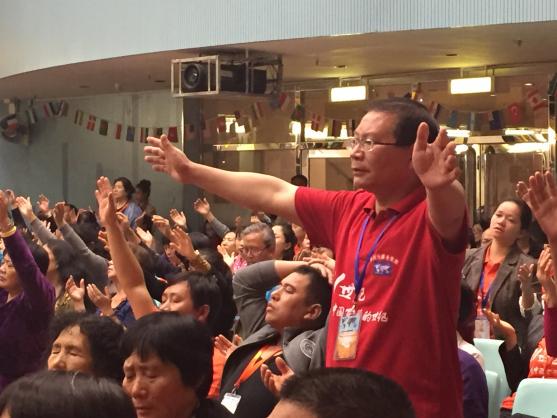After the reform and opening up of China, the number of Christians in China has been rising continuously, which has inspired many people. Many believe that the Chinese church has ushered in a great revival. However, it has also been pointed out that not only can the number of believers grow, but the quality of life of believers is even more critical. A closer observation reveals that the revival of urban churches cannot be overestimated.
Nowadays, large churches in many cities are full of people during the Sunday services, and some aisles are sometimes crowded with brothers and sisters. Therefore, many churches have opened more than three services to meet the needs of the many believers. Some churches even plant new campuses and set up more meeting places to ease the pressure on the number of people in the main meeting hall.
However, thoughtful people will find that many church fellowships (especially the ones for younger people or working believers) are not composed of local people, but of brothers and sisters from all corners of the country.
Some churches that initially used local dialects now have bilingual translations (Mandarin and local dialects), and some churches are even preaching in Mandarin Chinese only. The local language hymns have gradually faded out of use in worship services, and the "The Chinese New Hymnal" and "Stream of Praise" songs have become the ones used by brothers and sisters while worshipping.
These phenomena reflect a problem. The structure of believers in many urban churches has changed, from the former locals to the combination of believers from everywhere. And the larger the churches are, the more prominent this phenomenon has become.
With the increase in urbanization in China, many brothers and sisters in rural churches have left their hometowns and come to work and live in the cities. They go to church meetings in the cities, thus increasing the number of believers in these churches. The truth is that many people are already Christians in their hometown. The increase in the number of churches in the cities is accompanied by a decrease in the number of churches in the countryside. Therefore, from the total number of believers, the increase is actually not that much.
Although hundreds of people were baptized each year in some churches, this is not enough evidence to prove that the city church has really ushered in a great revival. Not only are many of these baptized individuals long-term churchgoers who come from Christian families, but for different reasons, they have chosen not to be baptized until later in life.
In addition, there are more than just a few believers from other places. Although these came to faith in their hometown, they were not baptized. They are willing to be baptized after coming to the city churches.
There are also many believers from the surrounding areas who chose to be baptized in the cities because of the idea that it is "more spiritual" to be baptized in the larger churches. They however usually do not meet or serve in these churches.
None of the above cases can be seen as a great increase of believers in large churches. To measure whether a church believer is growing quickly, one must look at the number and proportion of non-believers being baptized.
The status quo of both the living and faith conditions of urban migrant groups also needs attention. Many people come to work and live in the cities, being separated from their relatives and friends. In order to deal with loneliness and a need for help, it is undoubtedly the best choice to join a church and participate in the church's activities. For brothers and sisters who are of marriageable age, the church is an ideal place to find a life partner.
Therefore, the urban church has taken on the functions of the individual's hometown fellowship, mutual aid association, or other contemporary association or club, providing a warm home for migrant workers, as an example.
Many brothers and sisters in the city churches are full of enthusiasm and actively participate in various services. However, after returning to their hometown, their enthusiasm lessens and they are no longer as keen to participate in the fellowship. The reason is that rural churches' facilities are more backward compared with those in the cities. They are not adequate in meeting the needs of believers. Also, believers have many relatives and friends in their hometown, no longer feel lonely, and thus have less of a longing for church life.
This phenomenon can also be seen as the motivating factor for some migrant workers to go to church. Their attending is not simply out of faith but also a social need.
There are several things that contribute to a false sense of revival in urban churches. Some churches are not well-established in their ministry efforts, or they have many complicated interpersonal relationships, causing many believers to leave and go to other churches. Because of real estate construction, some churches become preferably located in convenient places thereby attracting many brothers and sisters to come to the meetings. Some churches or meeting places have preachers who preach well or have a novel style of worship and praise. As a result, many believers eagerly leave their home churches to attend these churches. All of the above phenomena have caused a large increase in the number of believers in some churches.
The increase in the number of people brought about because of heresy is also an important reason for the pseudo-revival of urban churches. In many cities (especially coastal cities), various domestic and foreign heretical cult organizations use the characteristics of large urban dwelling database, and actively spread their fallacies. In addition, their enthusiasm is far greater than that of the normal churches. Some brothers and sisters who do not know the truth well or have a strong background of faith would be captured by them.
The development of urban churches is a fact, but the phenomenon of false revival also objectively exists. This article is here to inspire others, and hopefully, more pastors and scholars will analyze this issue in depth.
- Translated by Wang Ze













